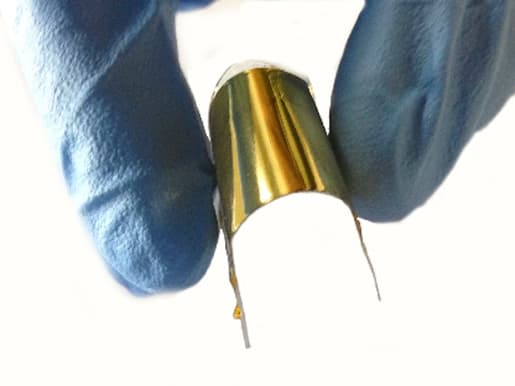Turning Muscle Movements Into Electricity: A National University of Singapore Research
The genius minds of National University of Singapore have developed a revolutionary way of powering up the new generation of wearables. The researchers led by Electrical and computer engineering professor Chengkuo Lee demonstrated their creation at the IEEE MEMS 2015 conference last week. The postage stamp sized device is able of generate electricity from the friction produced by human skin. The device is able to generate electricity owing to phenomenon called triboelectric effect. Triboelectric effect causes electrical charge to be built up when two different surfaces are put in close contact and those surfaces are pulled apart or flexed. Lokesh Dhakar, a graduate student who is part of the team explains that skin is an excellent triboelectric material as it has a high tendency of donating electrons and becoming positively charged. The negative layer involved a flexible silicone rubber layer that had thousands of tiny pillar-like structures. The pillars were created to increase the surface area that came in contact with the human skin. Underneath the rubber skin, they attached a 50nm-thick gold film which served as the electrode.

The team tested the device by attaching the nanopillar side on a test subject’s throat or forearm. Speaking or clenching the fist generated 7.5V or 7.3V respectively. The researchers say that if you tap the device using your fingers it produces a voltage of 90V and power of 0.8mW which is enough to light up 12 commercial grade LEDs. One of the advantages of the device created by the team is that unlike previous attempts of skin-based triboelectric generators, theirs is highly flexible and small in size. The next target of the team is to create devices of various sizes that conform to the human body.
Source: #-Link-Snipped-#via #-Link-Snipped-#

The team tested the device by attaching the nanopillar side on a test subject’s throat or forearm. Speaking or clenching the fist generated 7.5V or 7.3V respectively. The researchers say that if you tap the device using your fingers it produces a voltage of 90V and power of 0.8mW which is enough to light up 12 commercial grade LEDs. One of the advantages of the device created by the team is that unlike previous attempts of skin-based triboelectric generators, theirs is highly flexible and small in size. The next target of the team is to create devices of various sizes that conform to the human body.
Source: #-Link-Snipped-#via #-Link-Snipped-#
0
